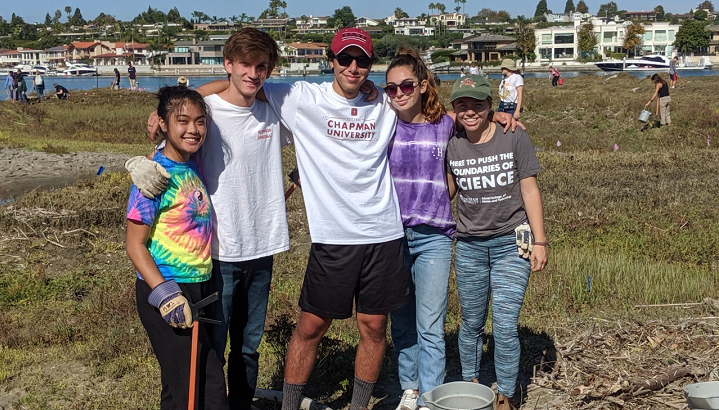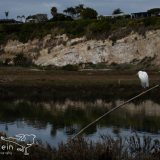
Environmental Science Course Works with Nonprofit to Restore Habitats in OC Faculty Spotlight: Matt Yurko, founder of Project Grow
April 22, 2021
Happy Earth Day, Chapman! Many of our students and faculty love to enjoy the beautiful Southern California environment, exploring both the beaches and mountains within driving distance of campus. One Chapman professor, Matt Yurko, is working to ensure these beautiful spaces are healthy and protected through the nonprofit Project Grow. He told us more about the project and the ways the Chapman community engages with conservation.
Yurko himself became interested in the environment at a young age when he and his family spent a lot of time in nature. “My introduction to the environment and conservation came through camping trips with my family and a very active Boy Scout troop (with weekend camping trips every month). Nature became an important source of joy for me throughout my life, and the conservation of natural places came as an outgrowth of wanting to protect that which was important to me. Studying Biology in my undergraduate work and pursuing a Master’s degree in Environmental Education provided me an academic and eventual career path. An internship at a nature center near the end of my senior year convinced me this was the right path for me. I encourage all college students to take on internships as part of their learning.”
Project Grow is a community-based habitat restoration program that engages community volunteers to help restore wildlife habitats, primarily in Upper Newport Bay in Newport Beach. Yurko strives to educate the local community, making them more knowledgeable about local habitats and contributing to a healthier Orange County environment.
Project Grow relies on community volunteers to be successful, and Yurko explained that the project not only helps restore nature but also helps build community. “[It] provides a great platform for Chapman students and the community to connect and interact with their local environment. Especially in our community, nature is commonly in the background (e.g. beautiful weather, gorgeous coastline, palm trees, etc.) or it’s used for recreation (e.g. surfing, biking, etc.) There is so much that is unique about where we live that it’s a shock to pause and just pay attention to the flora and fauna that make this place so interesting. I think Project Grow performs a service of developing awareness in students and community members of our environmental issues and solutions and gives them an avenue for taking positive environmental action.”
Since 2006, Project Grow has worked with Chapman students through Civic Engagement. Many of these students attend monthly programs during the fall and spring through the “Roots” events. There are also many opportunities for students to gain leadership and internship experience with Project Grow. Yurko says, “We have also worked with Chapman students as “Environmental Leaders” for at least five years now.” Environmental Leaders are student-interns who attend programs weekly and are trained to lead events and build ecological restoration, environmental education, and volunteer management skills.
Sara Stein ’18 is one of the Chapman students who worked as an Environmental Leader. She focused on marketing and publicity with Project Grow and continues to help promote the program today. “Matt and Project Grow are the reason I really got into wetlands and local conservation work and why I’ve focused my photography work on SoCal habitats,” shared Stein. Her photos from the preserve show the beauty that Newport has to offer while also identifying the risk the area faces from human development.
Photos courtesy of Sara Stein ’18. You can view more of her work at sarasteinphoto.com or on Instagram at @sarasteinphoto.
In the past year, Project Grow has also integrated with Yurko’s Introduction to Restoration Ecology class (ENV 224). He explained, “students will get to study the species in these areas and observe ecological interactions between species (such as pollinators and flowers or predator-prey relationships). We also study the human impacts that cause degradation in these ecosystems and finally, as the course title implies, we study and perform activities and research that help us restore these areas back to ecological health.”
One critical element of the class is the opportunity for students to work in the field. “I think direct experience complements students’ learning in ways that I can’t demonstrate as effectively in the classroom. We have great resources to help us learn restoration ecology, but it really requires time spent in the restoration site to fully grasp the concepts and understand the role humans can play in restoring the natural world.” Although the COVID-19 pandemic disrupted the past two semesters, the class will continue to work with Project Grow and perform fieldwork in the future.







